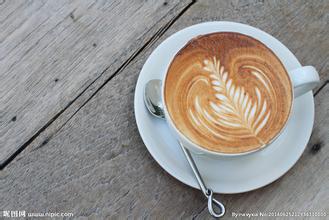Full-bodied and refreshing talent Tanzania boutique Kilimanjaro coffee flavor taste manor production area introduction
"fresh" is the most important factor in buying Kilimanjaro coffee beans. There are several steps to judge whether the beans are fresh or not.
1. Grab a handful of coffee beans and feel whether they are solid beans with the palm of your hand.
2. Whether it is enough to smell the aroma close to the nose.
3. Put a bean into your mouth and bite it twice. There is a clear sound indicating that the bean is well preserved and not damp.
If you want to buy a single Kilimanjaro coffee bean, grab a handful in the palm of your hand, in addition to the above judgment, but also look at whether the color, grain size and shape of each bean are similar, so as not to buy mixed beans. If you buy mixed beans, it is normal to have different colors, grain sizes and shapes.
Composition editing
Raw beans: raw beans are unbaked beans, which contain 11.5% fat; 11.5% moisture; 28.6% crude fiber; 4.0% minerals; 6.2% tannic acid; 1.3% caffeine; 17.0% essence; 8.1% sugar; 11.8% protein.
Baked beans: baked beans, which contain 13.0% fat; 1.5% caffeine; 29.5% crude fiber; 2.6% moisture; 5.0% minerals; 4.2% tannic acid; 29.4% essence; 2.0% sugar; 12.8% protein.
Quality evaluation standard editor
Taste-smooth, rough, etc.
Particles-too light, too heavy, etc.
Acidity-slightly sour, over-acidic in the upper part, etc.
Freshness-- from old to fresh
Defects-acidic, grassy, moldy, etc.
Coffee cups-fiber baked, washed, burned, old cups, etc.
Overall assessment-peaceful, rich, bitter, etc.
Fragrance-- from weak to strong
Fullness-not plump enough to make fancy coffee: there are many kinds of fancy coffee. Take Japanese cappuccino as an example.
First, make Kilimanjaro coffee beans into hot coffee.
2. Pour hot water into the coffee cup, warm the coffee cup with 20ml for 30 seconds, then wipe dry.
3. Put the fine sugar in the coffee cup. Pour in the hot coffee without stirring.
4. Cover the surface of the coffee with whipped cream from the edge of the cup to the center of the cup in a spiral way. make a spiral pattern.
Finally, sprinkle cinnamon powder and lemon peel crumbs to become the first: choose good quality coffee beans, because the use of poor quality coffee beans, of course, will greatly damage the flavor of coffee, even if you produce a very balanced single product coffee, but also can not make delicious coffee, the choice of good quality coffee beans is the biggest point.
Second: get rid of defective beans, mixed with defective beans, the taste will become worse. Therefore, it is better to be missing than rotten to get rid of the defective beans without stinginess. For example, long worms with holes, abnormal development, shell without benevolence, will be picked out.
Third: understand the characteristics of coffee beans, if the individual characteristics of the coffee beans to be blended are not well understood, it is difficult to mix good or desired coffee, such as mocha coffee is more sour, it can not be used to dilute the sour taste of coffee.
Fourth: understand the different degree of roasting, the degree of roasting of different coffee beans is different, their flavor is also different, so we should also have a good grasp, such as Kilimanjaro, Blue Mountain is generally medium-shallow baking, carbon roasting is deep baking and so on.

Important Notice :
前街咖啡 FrontStreet Coffee has moved to new addredd:
FrontStreet Coffee Address: 315,Donghua East Road,GuangZhou
Tel:020 38364473
- Prev

Introduction to the characteristics of the manor producing area with rich flavor of Guatemalan coffee
In Guatemala, it is famous for producing high-quality beans, which is the highest elevation and dry climate in the coffee growing area of the country. Located in a rare non-volcanic area in China and the United States, the mountains are potholed and the terrain is very dangerous. Although the elevation is nearly 2000 meters, the warm, dry air from the plains of Mexico protects coffee trees in this area from frost.
- Next

Introduction to the characteristics of the manor producing area of Mexican coffee beans with special taste
Heat a cup of milk, a teaspoon of cinnamon powder and a teaspoon of vanilla powder in a pot. Keep it at medium temperature. The heat is not too high. The milk must not boil. Then add the cocoa powder, fully dissolve and stir well. If you are particularly fond of chocolate, you can use chocolate paste instead of cocoa powder and milk. Let the milk dry for about 5 minutes, wait until the milk is slightly cool, then pour into the prepared coffee.
Related
- Detailed explanation of Jadeite planting Land in Panamanian Jadeite Manor introduction to the grading system of Jadeite competitive bidding, Red bid, Green bid and Rose Summer
- Story of Coffee planting in Brenka region of Costa Rica Stonehenge Manor anaerobic heavy honey treatment of flavor mouth
- What's on the barrel of Blue Mountain Coffee beans?
- Can American coffee also pull flowers? How to use hot American style to pull out a good-looking pattern?
- Can you make a cold extract with coffee beans? What is the right proportion for cold-extracted coffee formula?
- Indonesian PWN Gold Mandrine Coffee Origin Features Flavor How to Chong? Mandolin coffee is American.
- A brief introduction to the flavor characteristics of Brazilian yellow bourbon coffee beans
- What is the effect of different water quality on the flavor of cold-extracted coffee? What kind of water is best for brewing coffee?
- Why do you think of Rose Summer whenever you mention Panamanian coffee?
- Introduction to the characteristics of authentic blue mountain coffee bean producing areas? What is the CIB Coffee Authority in Jamaica?

